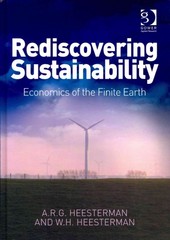5. This question deals with Haile and Tamer, "Inference with an Incomplete Model of English Auctions", (//E. 2003) and Haile. Hong, and Shum, "Nonparametric Tests for Common Values in First-Price Sealed-Bid Auctions". (2005). (a) Consider a single-object "button" auction (a la Milgrom and Weber) with independent private values. There are / potential bidders. Assume / is exogenous and known. Bidders are symmetric and risk-neutral. Each bidder draws his or her private valuev from a common distribution F(v) with a support [0. ). The seller's value for the object is "o and she wants to maximize her revenue from the auction by setting a reserve price r. Write down the seller's maximization problem and derive a condition for the optimal reserve price * from the F.O.C. of the max problem. (b) Write down the two axioms (or behavioral assumptions regarding bidding strategies) of Haile and Tamer (2003), (c) Construct, as fully as you can, the nonparametric (partial) identification result (i.e. the bounds) of Haile and Tamer (2003) from the two axioms. (d) Discuss, as fully as you can, the advantages of the incomplete approach taken by Haile and Tamer (2003) in the identification and estimation of ascending auctions. (e) In Haile. Hong. and Shum (2005), their nonparametric test of common values depends on the following theorem. Prove the theorem. Theorem Under standard assumptions of symmetry, affiliation, nondegencracy and an additional assumption of exogenous participation. v(x, x. ") is invariant to , for all x in a PV model, but strictly decreasing in a for all * in a CV model. where v(r. x'; ") = E[V X, = .x. max ) = x'].4. This question deals with Ellison (Rand '84) and Borenstein and Shepard (Rand 96). Both of these papers empirically test the validity of certain theoretical models of collusion. Set up a, Briefly describe the Rotemberg-Saloner and Green and Porter models of tacit collusion, Pay particular attention to what is known by the firms and the behavior of demand. Also, characterize the movements of price in the market. b. Discuss the main differences between the RS/1IH and GP models. Is the nature of "price wars" the same in the two classes of models? If not, how do price wars differ and what within the theoretical models generates this difference? c. Closely related to the Rotemberg and Saloner model is the Haltiwanger and Harrington model. Briefly discuss how the Haltwanger and Harrington model differs from the Rotemberg and Saloner model. Borenstein and Shepard d. What empirical prediction of the RS/HIH models do Borenstein and Shepard test" Explain why this prediction is inconsistent with a model of pricing with switching costs. c. Describe the context of the paper: What is the industry? What are the data? Is this a good setting to test the RS/HII model? [. How do the authors propose to test the theory" Describe the empirical model. Is the model structural or reduced form? What is the dependent variable? What is are the main independent variables of interest? g. What econometric difficulties are implied by the prediction that current margins should be correlated with expected future prices and quantities? How do the authors deal with these problems? Be as detailed as possible. Ellison h. What empirical predictions of the RS/1IH and the GP models does Ellison test? 1. Describe the context of the paper: What is the industry? What are the data? What characterizes equilibrium prices in this industry? A priori, which theory seems to be most consistent with the industry and the data (and why)? j. How does the author propose to test the two theories? Is the model structural or reduced form? What istare) the dependent variable(s). Are all of the dependent variables observed? k. What alternative explanation does Ellison have to deal with? Can be completely rule this out? I. This is a general 10 question. Analyze this "email strategy" for lowering gasoline prices (answer only once): "For the rest of this year, DON'T purchase ANY gasoline from the two biggest companies (which now are one), EXXON and MOBIL. If they are not selling any gas, they will be inclined to reduce their prices. If they reduce their prices, the other companies will have to follow suit. But to have an impact. we need to reach literally millions of Exxon and Mobil gas buyers. It's really simple to do! Now, don't wimp out at this point..."6. This question deals with Chiappori and Salanie. "Testing for Asymmetric Information in Insurance Markets". (2000, /PE) and Finkelstein and Poterba, "Adverse Selection in Insurance Markets: Policyholder Evidence from the U.K. Annuity Market", (2004, JP). (a) In Chiappori and Salanic (2000). what is the prediction from theory regarding asymmetric information (in the context of automobile insurance markets). which they want to test? Describe their null and alternative hypotheses in detail. What is the limit of this testing approach? (b) Give a brief overview of the empirical strategy employed by Chiappori and Salanie (2000). especially focusing on the parametric methods. What is their main empirical finding? (c) In Finkelstein and Poterba (2004). the authors basically do the similar testing for asymmetric information as Chiappori and Salanic (2000) did: however. Finkelstein and Poterba (2004), in a sense. extend the test. Describe. as fully as possible, the major (additional) contributions of Finkelstein and Poterba (2004) in testing for asymmetric information. (d) Briefly describe the data set used by Finkelstein and Poterba (2004) and provide a brief overview of their empirical methodology for testing asymmetric information. What are their empirical results regarding the test? (e) Compare the empirical findings from these two papers. What are possible explanations for the differences in their findings regarding asymmetric information









